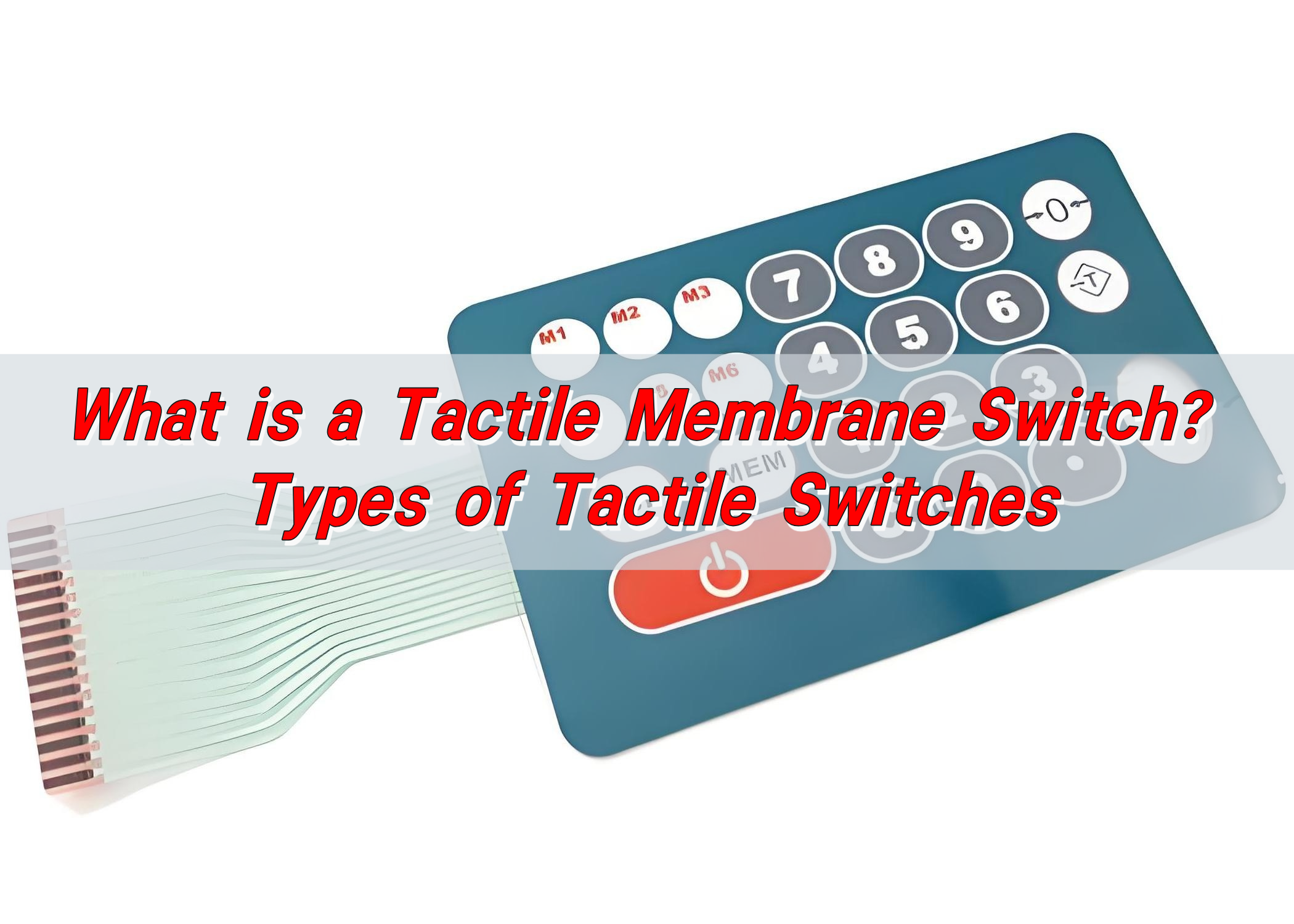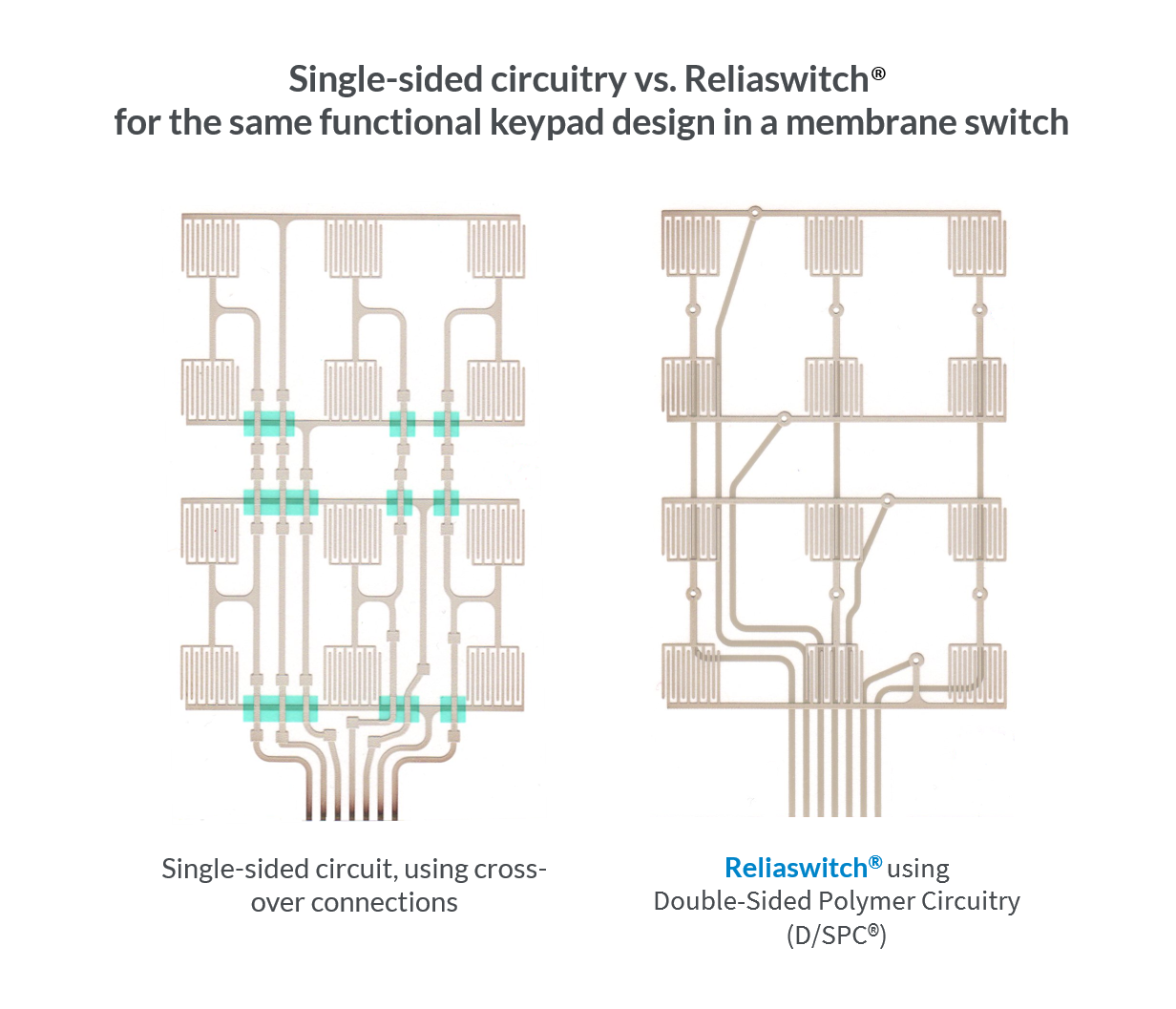Recognizing the Significance of Membrane Layer Change in Modern Electronic Devices
Membrane buttons are essential components in modern digital devices. They provide a blend of functionality and style that improves user communication. Their light-weight and resilient nature makes them appropriate for numerous applications. As industries progress, the demand for personalization and progressed functions grows. Comprehending exactly how membrane switches over add to innovation exposes their importance in shaping the future of electronics. What exists ahead for this innovation?
The Basics of Membrane Layer Change Modern Technology
Although frequently overlooked, membrane layer switch modern technology plays a crucial function in the modern electronics landscape - membrane switch. These tools, composed of several layers, act as interface for numerous electronic items, ranging from house home appliances to medical tools. A regular membrane layer button is composed of a visuals overlay, a spacer layer, and a circuit layer, which are diligently assembled to create a functional interface.When stress is related to the overlay, the circuit layer is completed, permitting signals to be transferred to the device. This technology is understood for its flexibility, allowing modification in layout, form, and performance to meet specific customer requirements. Additionally, membrane switches are slim and lightweight, making them suitable for applications where room is a costs. Their durability and resistance to ecological aspects even more enhance their charm, ensuring they can stand up to severe problems while preserving capability. Generally, membrane switch innovation is important to producing efficient and straightforward digital devices

Secret Benefits of Membrane Changes
Membrane switches offer numerous essential benefits that make them a recommended choice in numerous electronic applications. Their layout permits a portable form factor, allowing suppliers to produce sleek and light-weight devices. Furthermore, membrane buttons are resistant to dust, dampness, and chemicals, which improves their longevity and durability popular environments. The responsive comments provided by these buttons can improve user experience, making them instinctive and easy to operate.Furthermore, membrane buttons can be customized with diverse graphics and colors, enabling distinct branding possibilities. The production process is typically cost-effective, specifically for high-volume production, as it reduces setting up time and streamlines design. Membrane changes require very little upkeep, adding to lower overall functional costs. These benefits highlight their growing appeal in modern-day electronics, where dependability and straightforward interfaces are crucial.

Applications Throughout Numerous Industries
The convenience of membrane switches enables their widespread adoption throughout numerous markets. In the clinical area, they are frequently utilized in analysis equipment and individual tracking systems, supplying a resilient interface resistant to impurities. The automotive sector uses membrane layer buttons for dashboard controls, enhancing user experience with sleek designs that hold up against rough problems. In consumer electronic devices, they offer as control panels for gadgets such as microwaves and coffee manufacturers, giving an user-friendly user interface that is easy to clean. The aerospace field utilizes membrane switches in cabin controls, where dependability and room performance are vital. In addition, the industrial sector leverages these buttons in machinery and control systems to guarantee durable procedure sought after settings. This broad range of applications underscores the flexibility of membrane layer buttons, making them important elements in enhancing capability and individual interaction across diverse technological landscapes.
Modification and Design Flexibility

Future Trends in Membrane Layer Switch Over Advancement
Arising trends in membrane switch growth indicate an expanding emphasis on improved functionality and assimilation with wise modern technologies. As consumer need for a lot more innovative digital gadgets increases, producers are concentrating on producing membrane switches that not just offer standard functional functions however likewise incorporate functions like touch sensitivity, backlighting, and haptic feedback.Furthermore, improvements in materials are expected to enhance durability and environmental resistance, making membrane layer switches over suitable for varied applications in markets such as medical care, auto, and customer electronic devices. The integration of capacitive touch modern technology is likely to come to be extra widespread, permitting sleeker styles and enhanced user interfaces. membrane switch.Additionally, the increase of the Web of Things (IoT) is prompting the growth of membrane switches over that can interact wirelessly with various other devices, improving interconnectivity. In general, the future of membrane layer switch modern technology shows up encouraging, driven by development and the pursuit of easy to Full Article use services
Regularly Asked Inquiries
Just How Do Membrane Layer Switches Contrast to Typical Mechanical Switches?
Membrane buttons, being more space-efficient and offering a sleek style, comparison with standard mechanical buttons that give responsive feedback. The previous usually include customizable graphics, while the last generally assure resilience and dependability in various applications.
What Materials Are Frequently Utilized in Membrane Layer Switch Over Manufacturing?
Membrane layer helpful site buttons are generally generated making use of materials such as polyester, polycarbonate, and printed conductive inks. These products supply responsiveness, toughness, and versatility, making them ideal for different applications in electronic devices and interface.
Can Membrane Layer Switches Over Be Repaired or Reused?
Membrane layer switches can often be fixed, particularly if minor problems arise, such as sticky failing or surface area damage. Total reuse is commonly restricted due to wear and possible deterioration of products over time.
Just How Do Environmental Variables Impact Membrane Change Efficiency?
Environmental factors, such as temperature, moisture, and exposure to chemicals, considerably influence membrane switch efficiency. Severe conditions can bring about deterioration, impacting responsiveness and longevity, inevitably endangering the functionality of the gadget in various applications.
What Is the Normal Life-span of a Membrane Layer Change?
The normal lifespan of a membrane layer switch typically ranges from 1 to 5 million actuations, relying on variables such as use regularity, environmental problems, and the materials used in manufacturing, affecting sturdiness and performance longevity. A normal membrane layer switch consists of a graphic overlay, a spacer layer, and a circuit layer, which are diligently assembled to develop a functional interface - membrane switch.When stress is used to the overlay, the circuit layer is completed, permitting signals to be transmitted to the device. The tactile comments offered by these buttons can improve customer experience, making them simple and intuitive to operate.Furthermore, membrane layer buttons can be personalized with diverse graphics and shades, allowing for special branding opportunities. As consumer demand for more innovative electronic devices rises, manufacturers are concentrating on creating membrane switches over that not just serve basic functional duties however also include features like touch sensitivity, backlighting, and haptic feedback.Furthermore, advancements in materials are anticipated to boost resilience and ecological resistance, making membrane layer switches ideal for diverse applications in industries such as medical right here care, automobile, and consumer electronics. The integration of capacitive touch technology is likely to come to be more widespread, enabling for sleeker layouts and improved user interfaces.Additionally, the increase of the Web of Things (IoT) is motivating the development of membrane changes that can interact wirelessly with various other gadgets, improving interconnectivity. Membrane buttons, being a lot more space-efficient and supplying a streamlined layout, comparison with conventional mechanical buttons that supply responsive comments